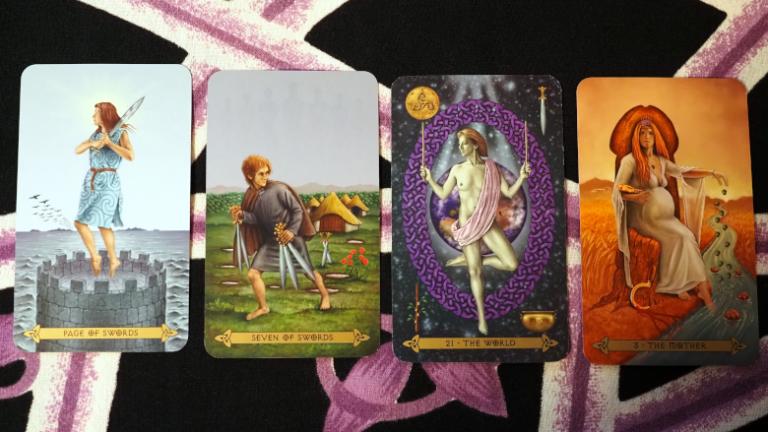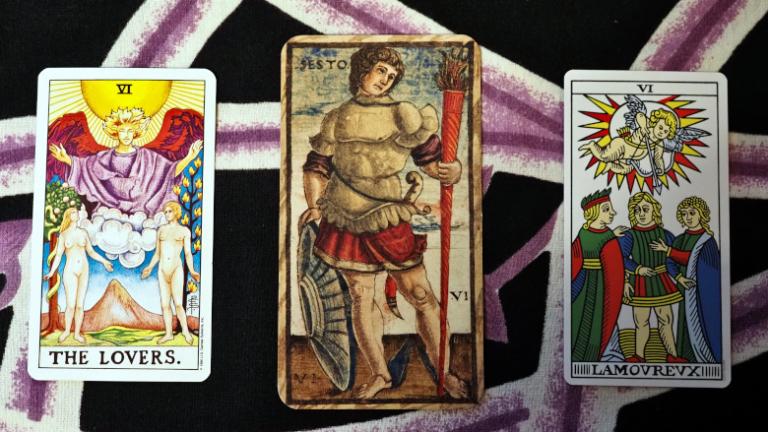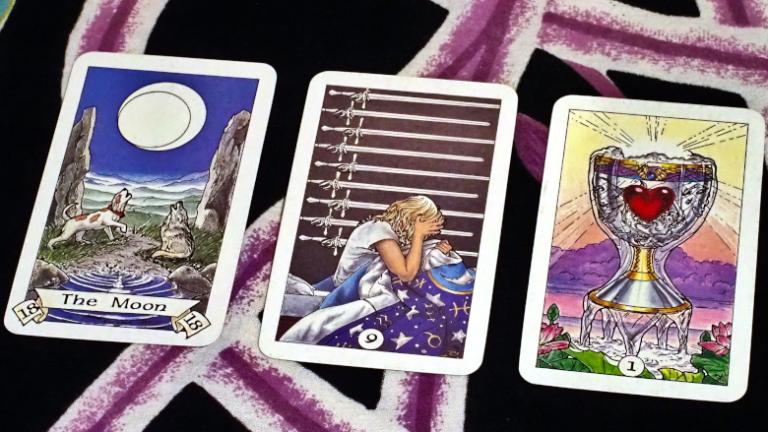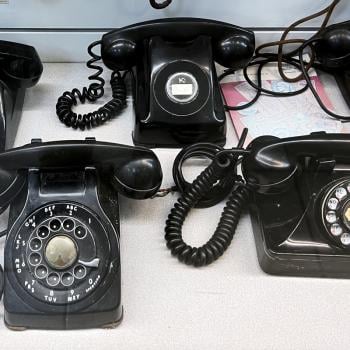When I first discovered Paganism and witchcraft, one of the first things I bought was a deck of Tarot cards. I had been fascinated with Tarot since I saw it on TV as a small child and I wanted to learn to read the cards.
My early efforts were less than successful.
Eventually, Dolores Nabors came to Denton CUUPS. Dolores was a skilled and experienced reader and she offered to teach a class on Tarot. I jumped at the chance to learn from an in-person teacher, and at the end of the class I felt confident in reading for myself and for others.
And then I set the cards down for six months and promptly forgot everything I learned.
Fortunately, Dolores taught her class again a year or so later. I took it again, and this time it stuck. In the 16 years since I’ve always been able to get an answer from the cards when I need it.
Earlier this year I taught an 11-week class on Tarot For Divination (it’s still available on demand if you’d like to take it). I was already a good reader or I wouldn’t have tried to teach others how to read. But the work I did preparing for the class took my reading to a new level. As with any skill, the more you practice the better you get.
I see too many people who do what I did after I took Dolores’ Tarot class for the first time. They set their cards down because they have no pressing need – I mean, it’s not like we don’t have enough to do just trying to live in these “interesting times.” And then when something critical comes up – for themselves or for someone who knows and trusts them – they can’t get the answer they need. Or they get an answer, but they’re not confident in it.
The good news is that there’s something we can do about that. We can spend a few minutes each week sharpening our Tarot skills.

Study the consensus meanings
A couple years ago we had a debate on whether Tarot should be read intuitively or using the “standard” meanings of the cards. That quickly devolved into “you’re just making it all up!” vs. “you’re creating Tarot dogma!” There is value in both approaches, but I believe the best approach is to learn the standard meanings – I prefer to call them consensus meanings – first. Once you know them well, then you can start to let your intuition run free.
Knowing the consensus meanings will give you the confidence you need to relax, and will also serve as guardrails to keep your intuition from running into imagination and “making it all up.”
So spend some time every week studying the consensus meanings.
If you’ve got a good book (not the little white book that comes with many decks), use it. If you don’t have a book you like, find a good website. I don’t have one I can personally recommend, but a quick look at the top results from a Google search says they’re at least not wrong.
Whatever your resource, pick a card, go over the standard meaning, and commit it to memory. Periodically test yourself by using your Tarot cards as flash cards.
Just make sure the book or website you’re using matches your deck. The consensus meanings of the Waite-Smith deck aren’t the same as the Tarot de Marseille, and they’re very different from the Sola Busca Tarot. Don’t try to force Waite-Smith meanings onto cards that don’t resemble Pamela Colman Smith’s artwork.

Study the cards – what do you see?
If a picture says 1000 words, how can we be satisfied with 100 words in a card description, or with a half dozen “keywords”? Most Tarot cards contain a treasure trove of imagery. Our challenge as readers is to figure out which images are relevant to the question we’re trying to answer.
So pick a card – at random, in order, or just what you want to focus on today – and look at it. No, I mean look at it. See everything that’s there. Who is on the card? What is on the card? Look at the ground, the sky, the water. Look at the colors. Look at every detail you can find.
Which details are important? That’s not relevant in this exercise. In a given reading, any feature can be critically important, or it can be completely unimportant. Which is which depends on the context of the question and the other cards in the reading.
For this exercise, what’s important is that you learn to notice everything in the painting. You can’t interpret what you don’t notice.
As you study a card, make a list of all the feature you see. When you come back to that card in the future, make another list. Then compare your lists and see what you noticed in one but not the other. The goal isn’t to memorize everything that’s on the card. The goal is to learn to see everything that’s on a card when you pull it in a reading.
Do practice readings
I’m not a fan of “general” readings. Divination works best when you have a clear and concise question. Learning to ask good questions – and learning how to guide your clients in refining their questions – is half the battle in getting good answers.
But our lives are busy enough and complicated enough that coming up with one question every few days isn’t very difficult.
Yes/no questions can be answered with a one-card draw. Most simple questions can be answered with three cards, or with five at most. Save the Celtic Cross and other large spreads for deeper questions and situations.
Take good notes! Write down your question, the cards you drew, and how you interpreted them. Then come back at the appropriate time and see how you did. What did you get right? What did you get wrong? What did you miss? Learn from your successes and learn from your failures.
Some people say “I can’t read for myself.” While that’s good self-awareness, it’s only valid when it comes to big, deep questions. You should be able to answer questions like “will I get a check in the mail today?” or “will it rain tomorrow?” for yourself as well as you can for someone else. If you can’t do even that, you have some work to do on separating your desires from your observations. With practice, though, almost everyone can divine simple questions for themselves.
The key is practice.

Read books on Tarot
People have been reading Tarot cards for 500 years. They’ve come up with a wide variety of decks and ways to read their decks. They have different theories as to how Tarot works. My way works for me and it will work for anyone who practices it diligently, but it’s not the only way.
I think it’s helpful to have only one “voice” in your head when you’re beginning. Stick to one deck, one teacher, one book. But after you’ve been reading for a while, start explore some of the diversity of thought and practice in the Tarot world.
When you do, you’ll find people who read for divination and others who read for self-development. Some work from an esoteric Christian worldview (as depicted in much of the imagery of the Waite-Smith deck), some from a modern Pagan worldview, and some from a strictly psychological worldview. Within these worldviews there are multiple approaches and interpretations.
I’ve found most serious works on Tarot to be beneficial. Even if I rejected 90% of what they had to say (because it wasn’t relevant to me, not because it was objectively wrong) that other 10% was enough to make the book worth reading.
As with anything else, there’s a lot of Tarot garbage floating around the internet – and around the book stores. Read with discernment.
My favorite book for beginners is Learning the Tarot by Joan Bunning. My favorite book for intermediate practitioners is Read Like the Devil by Camelia Elias.
These are core practices you never outgrow
I pray four times a day, every day. Prayer is one of my core practices – it’s part of who and what I am.
The Dalai Lama spends six hours a day in meditation, prayer, and study. LeBron James practices free throws every day. Core practices support spiritual leaders, athletes, and everyone else – including Tarot readers.
The study, practice, and reading recommended here isn’t something you’ll ever outgrow. It’s not something you’ll leave behind when you become an advanced reader. It’s something that will keep your Tarot skills sharp now and as long as you keep practicing.

















